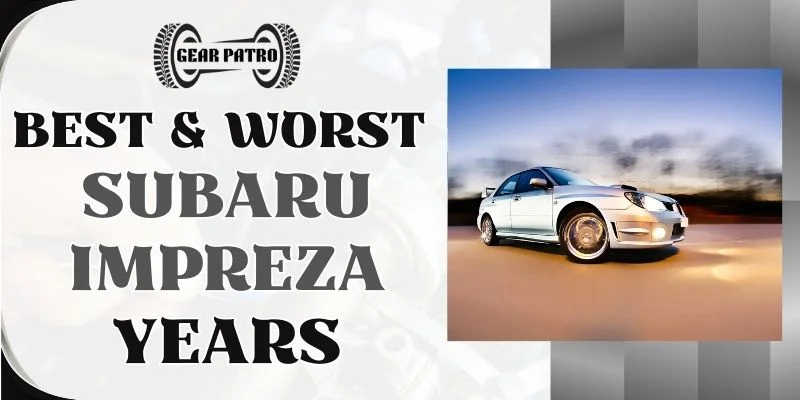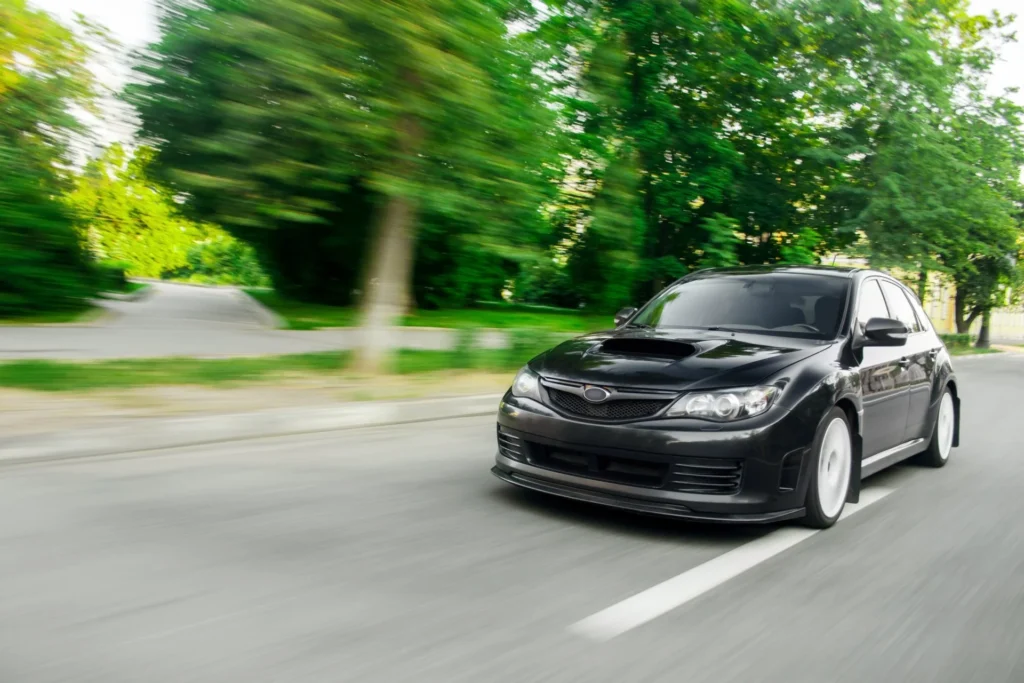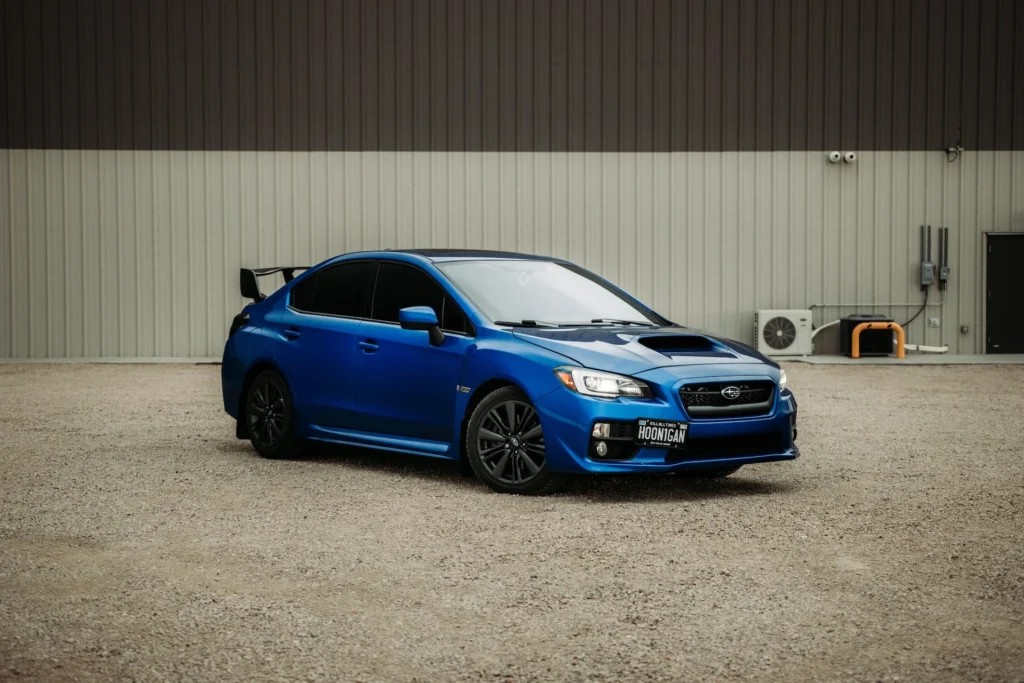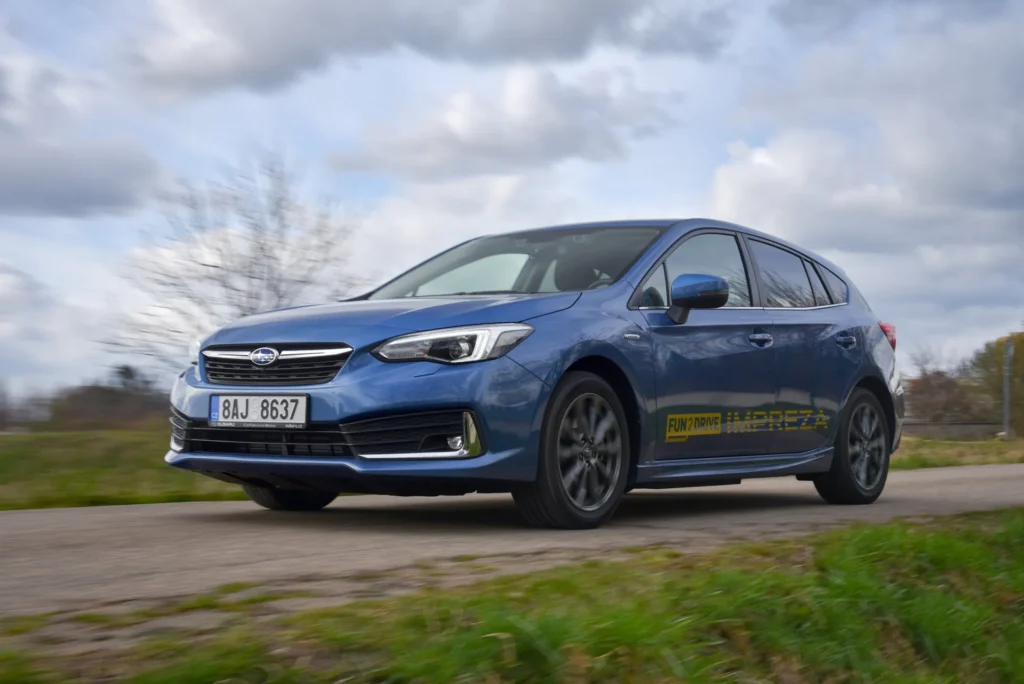Our simple guide evaluates Subaru Impreza models from 2002 to the latest model and categorizes the best and worst years.
To determine the best and worst Subaru Impreza model years to purchase, we’ll analyze each Subaru Impreza generation.
We’ve deeply analyzed each generation of Impreza, isolating the most reliable years for consideration based on data from trusted sources such as NHTSA, Kelley Blue Book, and Edmunds.

For a precise understanding of which Impreza years to avoid and which to buy, I also take into account factors such as owner-reported reliability, safety ratings, and maintenance costs.
It’s time to get started.
Subaru Impreza Generations
In the early 1990s, Subaru introduced the Impreza, one of the most popular compact cars on the market today. In its first generation, the Subaru Impreza set the standard for practicality and sporty performance. It was marked by a combination of both, which Subaru was known for.
Known for its efficient boxer engine and symmetrical all-wheel drive, this car was quickly gaining attention.
An overview of the generations from 2002 to the present is presented below:
| Generation | Years |
| 2nd generation (GD/GG) | 2002-2007 |
| 3rd generation (GE/GH/GV/GR) | 2008-2011 |
| 4th generation (GJ/GP) | 2012-2016 |
| 5th generation (GK/GT) | 2017-Present |
A substantial amount of change has occurred between generations. The difference between generations may very well be the difference between buying a Subaru Impreza or just being interested in its history.
Subaru Impreza Best, Neutral, and Worst Years
There are many factors that contribute to our evaluation and categorization of Subaru Impreza years:
A consolidated view of Impreza’s performance over time is provided by this graph, which combines ratings from all the sources mentioned above.
Below you’ll find a table displaying Subaru Impreza model years categorized by the best, neutral, and worst years.
| Generation | Best Years | Neutral Years | Worst Years |
| 2nd generation (GD/GG) | 2005 | 2006 2007 | 2002 2003 2004 |
| 3rd generation (GE/GH/GV/GR) | 2010 2011 | N/A | 2008 2009 |
| 4th generation (GJ/GP) | 2014 2015 2016 | N/A | 2012 2013 |
| 5th generation (GK/GT) | 2021 2022 2023 2024 | 2020 | 2017 2018 2019 |
Our “Neutral Years” are model years that neither overperform nor underperform dramatically. They offer a balanced experience in both performance and reliability.
Various factors can negatively impact the assessment, including NHTSA recall data. It is a sign of a declining car’s reliability if there are more complaints and recalls.
Let’s take a closer look at the specifications of the best, neutral, and worst years.
Best & Worst Years for Subaru Impreza 2nd Generation (2002-2007)
In 2002, Subaru introduced the second generation of its Impreza model, marking the model’s evolution to a new level.

As well as the acclaimed Impreza WRX and Impreza WRX STI variants, this generation was recognized for its high performance and dependability.
The Best Years: 2005
Among the most highly praised vehicles of this generation, the 2005 Subaru Impreza embodies the very best of this generation’s advancements.
This car’s turbocharged 2.0-liter EJ20 engine stands out among its competitors. Transmission strength issues were found in early second-generation Impreza models such as the 2002 and 2003 versions (known as “bug eye”). By 2005, these issues had been resolved. A 2.5-liter turbocharged engine was added to Impreza WRX models after 2005.
Additionally, many enthusiasts praised this year’s “blob-eye” facelift as a change in aesthetics.
As far as safety and technology are concerned, Subaru incorporates advanced features that make the vehicle even more appealing. There are new alloy wheels, automatic climate control, and body-color ground effects on the new WRX.
It’s clear that 2005 is the most reliable Impreza of this generation due to its performance stats and positive reviews from Edmunds and KBB.
Moreover, it was an attractive choice for commuters and performance enthusiasts alike due to its average fuel consumption of 15 mpg in the city and 29 mpg on the highway.
The Neutral Years: 2006, 2007
Subaru maintained momentum developed by the 2005 model as it transitioned to the 2006 and 2007 Impreza models. Performance was stable and reliable during these years, with the EJ20 engine continuing to operate.
It wasn’t as if Subaru introduced entirely new features, but rather refined its existing systems. In addition to improving braking systems, suspension technology was further improved. Safety was a top priority.
Impreza models in 2006 and 2007 did not necessarily bring groundbreaking innovations, but they did build upon the foundation laid by 2005 models, ensuring consistent and reliable performance.
The Worst Years: 2002, 2003, 2004
The second generation faced challenges during its early years, despite its eventual success.
This generation’s debut model, the 2002 Impreza, had a fair share of problems in its early years. One of the most common complaints was about a fuel smell in cold weather, according to NHTSA.
The cause of this problem was found to be the fuel lines, which experienced excessive contractions and expansions as a result of temperature fluctuations. A small crack in the fuel line caused Subaru to recall the affected 2002 and 2003 models in 2009 because of the potential fire risk associated with significant fuel leaks.
Other noteworthy issues were brake problems and suspension problems, especially the detachment of the front lower control arm. As a result of corrosion on the lower control arm of the 2002-2007 Subaru, the lower control arm is susceptible to breaking, which can be a significant problem in areas with snow melting agents.
There was still a control arm detachment problem with the 2004 Impreza, continuing the trend of challenges. In addition, airbag recalls began this year and are expected to extend through 2023.
A recall was issued on most models from 2004 through 2011 as well as the WRX variants from 2012 to 2014. While the Impreza WRX models of this era have suffered setbacks, they still find favor with enthusiasts, especially those with turbocharged EJ20 engines.
You can see the Subaru Impreza recalls and complaints from 2002, 2003, and 2004 on the NHTSA website.
Best & Worst Years for Subaru Impreza 3rd Generation (2008-2014)
Introducing the third generation of Subaru Impreza in 2008, the model marked a turning point in the company’s history. As some years presented more challenges than others, Subaru’s efforts in this generation were aimed at challenging the mainstream, offering a blend of performance, safety, and technology.

NOTE
Compared to previous generations, this generation had particularly high recalls, with an average of 15 each model year. Prior to making a purchase, it has become common recommendation to prospective buyers to check the Vehicle Identification Number (VIN) to ensure that the vehicle was not affected by any recalls.
The Best Years: 2010, 2011
The Impreza was near perfection by the time 2010 rolled around. The early years of this generation had struggled to balance performance and reliability, which made these years so appealing.
There are very few changes to the 2.5-liter EJ255 engine’s internals. A wide-body shell from the STI was added to the 2011 model year Subaru WRX, as well as quad muffler tips with diffusers.
The introduction of WRX Base, WRX Limited, WRX Premium, and 2.5i GT trim levels provided consumers with a wide range of options. There was a four-door version of the WRX STI for the 2011 model year.
With Electronic Stability Control available as standard in many markets, Subaru has always been known for its safety.
The average fuel consumption for city driving and highway travel improved moderately, with 17 mpg and 31 mpg, respectively.
The Worst Years: 2008, 2009
A relatively high number of complaints were reported to the NHTSA regarding airbags and powertrains in 2008 and 2009 Impreza models.
Continuing Takata airbag issues were a major concern for earlier models of the second generation. A long-standing issue of rupturing airbag inflators upon deployment was the cause of this recall for the 2008 and 2009 Impreza models.
Several aspects of the powertrain, including the clutch and pedal systems, were scrutinized as well. There have been many reports of owners experiencing creaking and clicking noises as a result of the firewall and welds breaking. It is possible for this issue to escalate to the point of clutch and brake pedal failure in extreme cases.
For the 2008-2014 Impreza models, Subaru issued a recall in 2014, in response to corrosion-caused brake line failures, particularly in states where high salt usage occurs during winter.
Best & Worst Years for Subaru Impreza 4th Generation (2012-2016)
A range of technological advances, a refined design language, and refined powertrains were introduced with the fourth generation Subaru Impreza.

There were certain years in the model line that stood out for their excellence, while others were tainted by problems.
The Best Years: 2014, 2015, 2016
Since the early fourth generation Impreza models were plagued by teething problems, the 2014, 2015, and 2016 models have been considered the most reliable.
With the introduction of the 2l FB20 flat-four engine for the 2012 model year, the older EJ25 engine was replaced with the newer FB20. Its reliability, power delivery, and efficiency had been proven by the time 2014 rolled around. There were three trim levels: 2.0i base, 2.0i premium, and 2.0i limited.
It is equipped with a 6.2-inch touchscreen, a rearview camera, cruise control, and a rearview camera for 2015. In addition to adaptive cruise control, automatic pre-collision braking, and lane departure warning, a safety package featuring advanced safety features was optional in the Limited and Sport Limited trim levels.
In particular, Subaru’s EyeSight active safety system was awarded the Top Safety Pick+ rating by the IIHS for the 2015 and 2016 Impreza models.
In city settings, the fourth-generation model returned 20 mpg, while on the highway, it delivered 35 mpg.
The Worst Years: 2012, 2013
The 2012 Impreza saw the introduction of the FB20 engine, replacing the EJ25. However, there were complications with the new engine.
There was a significant concern regarding the 2012-2014 Impreza models in 2018, and Subaru addressed it with a recall. Engine stalling could be caused by fractured valve springs that caused the issue at hand.
There were particularly serious problems with the Occupant Detection System (ODS) in 2012 Impreza airbags. There was a problem with this system periodically switching on and off airbag indicators due to intermittent failure to recognize occupants, creating safety concerns.
A majority of 2013 Impreza problems were related to the airbag systems, just as they were with the 2012 model. These models come equipped with Continuously Variable Transmissions (CVTs), which have been flagged as having reliability and responsiveness issues by some owners.
The NHTSA recalls and receives complaints for the 2012 and 2013 Subaru Impreza.
Best & Worst Years for Subaru Impreza 5th Generation (2017-2024)
Continuing Subaru’s rally heritage while embracing modern design and technology, the fifth generation Subaru Impreza was a bold statement of the company’s evolution.

It is currently Subaru’s policy not to address common windshield problems with its third generation Impreza models.
The Best Years: 2021, 2022, 2023, 2024
There is no doubt that 2021-2024 was the peak of the fifth generation. In particular, Consumer reports rated the 2022 Impreza as reliable and owner-satisfying.
As part of Subaru’s 2021 Impreza redesign, new features were introduced to better cater to the demands of today’s drivers. All trim levels now come equipped with Apple CarPlay and Android Auto, providing seamless smartphone connectivity.
The 2.0-liter direct-injection boxer-four engine that powers the new Subaru Impreza was revised from the FB20. A 5-speed manual transmission was also offered, along with Subaru’s Lineartronic CVT with enhanced ratio coverage. With the improved fuel efficiency, the city driving mileage was boosted to 21 mpg and the highway mileage jumped to 41 mpg.
A number of critics, including Edmunds, were highly critical of the 2021 model, which featured Subaru’s legendary all-wheel-drive system when it came to enhancing grip and stability on a variety of terrains.
It was during these years that EyeSight Driver Assist Technology became a standard feature. Additionally, Subaru’s reputation as a company that prioritizes driver and passenger safety was further strengthened by the inclusion of adaptive cruise control, lane keep assist, and pre-collision braking.
The Neutral Years: 2020
Despite being commendable in its offerings, the 2020 Subaru Impreza didn’t necessarily stand out as the best. In terms of the evolution of the fifth generation, it was a transitional year, marking the threshold between the early and later challenges.
Some of the drawbacks of its predecessors were retained even though it brought forward many of their advances.
The vehicle has been a reliable choice for those seeking a mix of performance, safety, and technology without veering too far towards any one extreme.
The Worst Years: 2017, 2018, 2019
There were some hiccups in the early days of the fifth-generation Impreza, despite it being a groundbreaking car in many respects.
In 2017, the Impreza was notorious for its “headlight recall,” causing significant concern among drivers. A problem with the reflex reflectors and high beam reflector on the left was responsible for the inadequate reflection of light.
Additionally, windshields were cracking at their lower parts on a recurrent basis, a source of contention among owners. Other Subaru models with the same problem include the Forester and Outback. It is possible that the replacement of a cracked windshield will cost more than 1000 dollars if the EyeSight technology is used.
As a result of concerns with the Engine Control Module (ECM), Subaru of America had to recall specific 2017-2019 Subaru Impreza models. We observed that the ECM continued to supply power to the ignition coil even after the engine had been shut off. A short circuit can result in engine stalling, which could occur as a result of this issue.
Recalls and complaints of the 2017 Subaru Impreza can be found at the NHTSA website.
Best & Worst Subaru Outback Years | Years To Avoid
Best & Worst Subaru Forester Years | Years To Avoid
Best & Worst Subaru Crosstrek Years
Conclusion
Subaru Impreza years have a tendency to stand out more than others. Choose the model year that is right for you by conducting thorough research.
Are you familiar with any of the Subaru Impreza generations, and how would you rate their performance and reliability?
We’d love to hear your thoughts in the comments!
